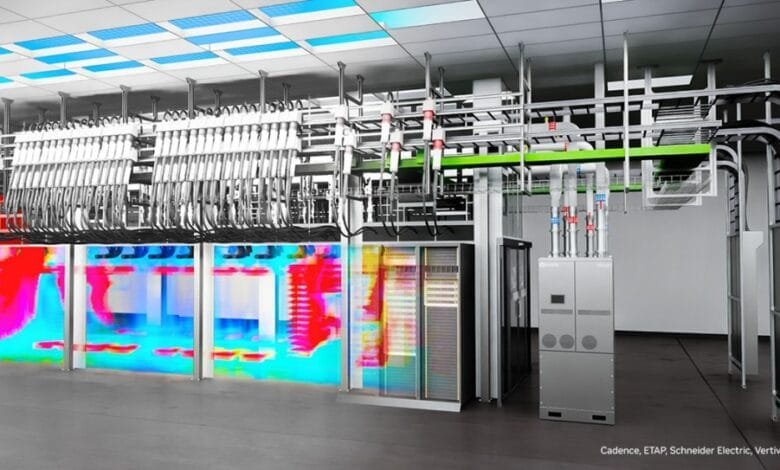Nvidia Unveils Omniverse AI Factory Digital Twin Blueprint

▼ Summary
– Nvidia expanded its Omniverse Blueprint for AI factory digital twins, now in preview, with new integrations from partners like Delta Electronics, Jacobs, and Siemens.
– The blueprint enables engineering teams to design, simulate, and optimize AI factories in virtual environments using OpenUSD asset libraries for unified 3D modeling.
– New partners, including Siemens and Delta Electronics, contribute SimReady models to enhance accurate simulations of facility equipment and workflows.
– The SimReady standardization workflow, now publicly available, helps developers create and test digital twins for AI factory infrastructure like power and cooling systems.
– The blueprint aims to de-risk development and optimize performance for next-gen AI factories through unified, physics-based digital twins.
Nvidia has introduced a major upgrade to its Omniverse Blueprint for AI factory digital twins, now offering preview access to enhanced simulation capabilities. The expanded framework integrates power, cooling, and networking solutions from industry leaders including Delta Electronics, Jacobs, and Siemens—joining existing collaborators like Cadence, Schneider Electric with ETAP, and Vertiv. This ecosystem enables companies to virtually design and test AI factories before physical construction begins, reducing risks and optimizing performance.
The blueprint leverages Nvidia’s GB200 NVL72 reference architectures and Universal Scene Description (OpenUSD) libraries, allowing engineers to create comprehensive 3D models that simulate every aspect of data center operations. By unifying power distribution, thermal management, and networking in a single digital twin, teams can identify potential issues early and refine designs for maximum efficiency and reliability.
New partners are bringing specialized expertise to the platform. Siemens is contributing 3D models aligned with SimReady standards, while Delta Electronics adds equipment simulations. Jacobs is refining the end-to-end workflow, ensuring seamless integration of real-world data. These additions complement existing contributions from Schneider Electric and Vertiv, which provide SimReady assets for power and cooling systems.
Thermal and power simulations are now more robust thanks to connections with the Cadence Reality Digital Twin Platform and ETAP. Engineers can evaluate energy consumption, airflow, and electrical load distribution long before breaking ground. According to Tanuj Khandelwal, CEO of ETAP, this approach helps customers “optimize energy efficiency for AI workloads at scale.”
A standout feature is the SimReady standardization workflow, which ensures physics-based accuracy across all digital twin components. Originally developed for Nvidia’s internal use, this open framework allows data center developers to create, test, and refine infrastructure models with precision—particularly for electrical and thermal systems critical to AI factory performance.
Ben Gu, Cadence’s VP of R&D for multiphysics system analysis, emphasized that digital twins are essential to meeting global AI infrastructure demands. The collaboration with Nvidia, he noted, transforms how factories are designed and operated, enabling smarter builds with minimal downtime.
This evolution of the Omniverse Blueprint represents a paradigm shift in industrial AI development. By combining OpenUSD’s flexibility with SimReady’s rigorous standards, Nvidia and its partners are accelerating the deployment of next-generation AI factories—delivering smarter, more resilient facilities from the virtual design phase onward.
(Source: VentureBeat)